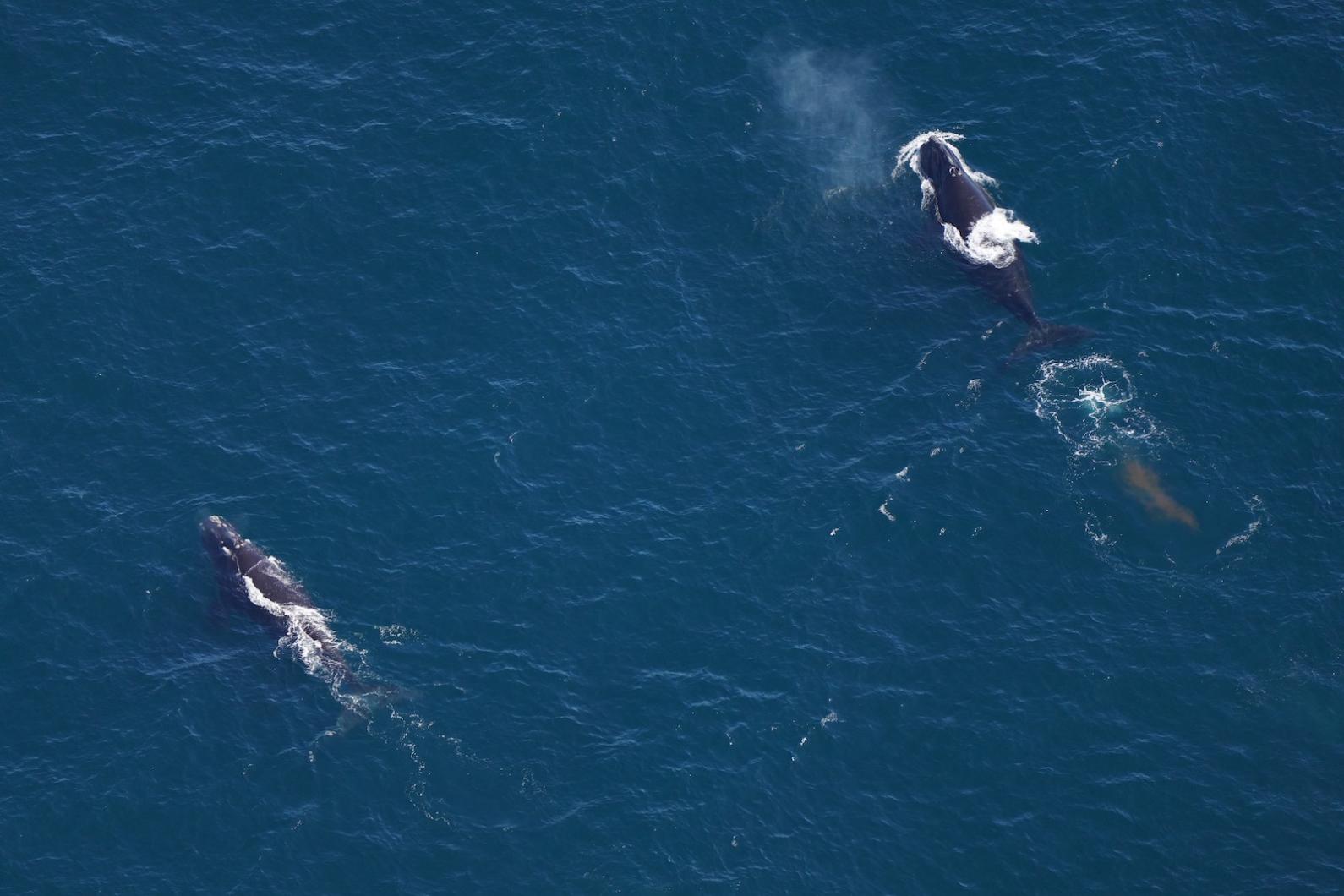Researchers last week spotted one of the largest aggregations of right whales south of the Vineyard.
More than 60 right whales were sighted 55 miles south of the Island in an aerial survey conducted by the New England Aquarium’s Anderson Cabot Center for Ocean Life on April 23. A second survey on April 28 found another group of 40 whales, including 15 additional individual whales.
The sightings, which included a whale that hasn’t been seen in several years, were welcomed by researchers as the species has been teetering on the edge of extinction.
The whales were swimming in shipping lanes, prompting the National Marine Fisheries Service to designate a voluntary slow zone on April 24, which urges mariners to slow down to 10 knots or less. Approaching a right whale closer than 500 yards is a violation of federal and state law.
Ship strikes are one of the leading causes of injuries and deaths for right whales. The survey team alerted several large commercial ships in the area at the time, which shifted course to avoid potential collisions with the whales.
North Atlantic right whales have been listed on the Endangered Species Act since 1970. National Oceanic and Atmospheric Administration Fisheries estimated there are only 370 individuals remaining in 2023.
The winter and spring seasons are the peak time of year for right whale sightings in New England waters. The aquarium said a large number of right whales are also currently feeding in Cape Cod Bay. Nearly half of the total estimated right whale population was documented in New England since December by the aerial survey team.
Among the Vineyard whales was Calvin, a female who was orphaned when she was eight months-old after her mother was killed by a vessel strike in 1992. Since then, Calvin has survived eight entanglements and given birth to four calves of her own. But researchers have worried about her because she hasn’t been spotted for almost three years.
“At her last sighting, she had severe entanglement wounds that were new,” said Katherine McKenna, an associate research scientist at the Anderson Cabot Center in a statement. “A lot of people had given up hope that she was still alive after not being seen for so long.”
Ms. McKenna said her story illustrates the resiliency of the species.
“Their resiliency alone is not enough for this species to recover,” Ms. McKenna said. “We must reduce the sources of human-caused mortality and injury that are preventing the right whale population from thriving.”







Comments (1)
Comments
Comment policy »